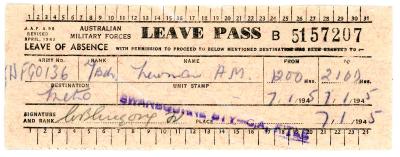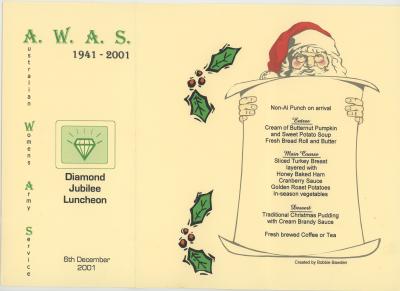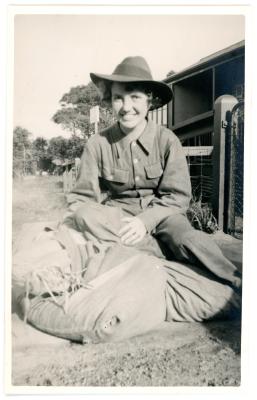MV KOOLAMA Silver Plated Tankard
c. 1942Silver plated hour-shape tankard with handle. Engraved on side MV Koolama.
Silver plated tankards were used on ships, including those in the merchant navy in Second World War.
Details
Details
Engraved "MV Koolama" on side and marked "Carrington / EP AI / Plate" on the tankard base.
W.A. State Shipping Service vessel MV Koolama left Fremantle heading to Darwin via the northern ports of Western Australia on 10 February 1942 carrying crew, passengers, army personnel and cargo. While on route from Broome to Wyndham the ship was circled by a Japanese reconnaissance plane. Captain Eggleston gave the order to fire, and the plane dropped its bombs, none of which found their target. Shortly after 3 other planes bombed the ship, badly damaging it and causing the steering to fail and resulting in one serious casualty.
The ship was beached at Cape Rulhiers and passengers unloaded. On 20 February the Benedictine monks at the mission at Pago (80km away) were informed by Darwin of the bombing and on 22 February the monks were asked to contact the survivors. The mission lugger reached the crew and passengers on 24 February. Those wounded, including one serious head injury, were taken to the mission on the lugger. Father Seraphim stayed with those left on the beach; the plan was to walk the 120kms overland through rough country to the mission, estimated to take 4 days.
The walk commenced on 26 February but survivors found it difficult to keep up with the Aboriginal guides. This, along with their running out of food made crossing the Drysdale River too dangerous for the weak and non-swimmers. Aboriginal guide Gerome Pendagudje and seaman Dudley Anderson crossed the river with Gerome running the 40 kilometres to the mission to collect ropes and provisions for the group, which finally arrived at the mission on 4 March.
Meanwhile, Captain Eggleston, with the help of the crew and some passengers, had made repairs to and refloated the ship which arrived at Wyndham on 2 March. While the ship was being unloaded on 3 March it was strafed by Japanese Zero fighters and sank at the jetty later in the day. The mission lugger returned to the beach at Cape Rulhiers to pick up Father Seraphim and the remaining survivors. One of the survivors fell ill and died on the way back to the mission, the only person who did not survive the incident.
Open in Google Maps
Nearest geotagged records:
- Invalid Cup (0km away)
- Peter LONEY Letter (0km away)
- Ellis SILAS Water Colour Painting (0km away)
- Engraved Japanese Water Bottle belonging to Robert George Staunton RENNIE WX7493 (0km away)
- Enlistment Poster (0km away)
- W. D. & H. O. Wills Lace Flag Cigarette Cards (0km away)
- First world War Picture Postcard (0km away)
- Photograph of the Japanese surrender to Australia on 13 September 1945. (0km away)
- Engraved Tin given to Major Arthur Robinson HOME WX11151 (0km away)
- Martini-Henry action (0km away)
Nearby places: View all geotagged records »
Princess Royal Fortress Military Museum
Princess Royal Fortress Military Museum
Other items from Princess Royal Fortress Military Museum
- Australia in Palestine (book)
- “Partners of Vietnam Australia” Quilt by Albany Ladies Veterans and Partners
- Weekend Magazine: HMAS Perth article - Veteran Comes Home (April 12, 1969)
- HMAS Perth II D38 Postcard
- “Navy Week 84” colour poster featuring HMAS Perth II D38
- Large (A4) size colour print of HMAS Perth II (D38), HMAS Hobart (D39) and HMAS Brisbane (D41)
- Leave Pass for WF90136 Bdr NEWMAN A.M.
- AWAS WA (Inc) Orders of the Day 50th Anniversary Luncheon Booklet
- AWAS Diamond Jubilee Luncheon 06/12/2001 Leaflet
- Western Australia AWAS Diamond Jubilee 1941 – 2001 Leaflet by Edie ARNOLD
- “Australia Remembers 1945 – 1995” Commemorative Folder & Contents for Women Who Served in Australia’s Defence Forces
- Black & White Photograph of Agnes Mary NOACK at Princess Royal Fortress, Albany








